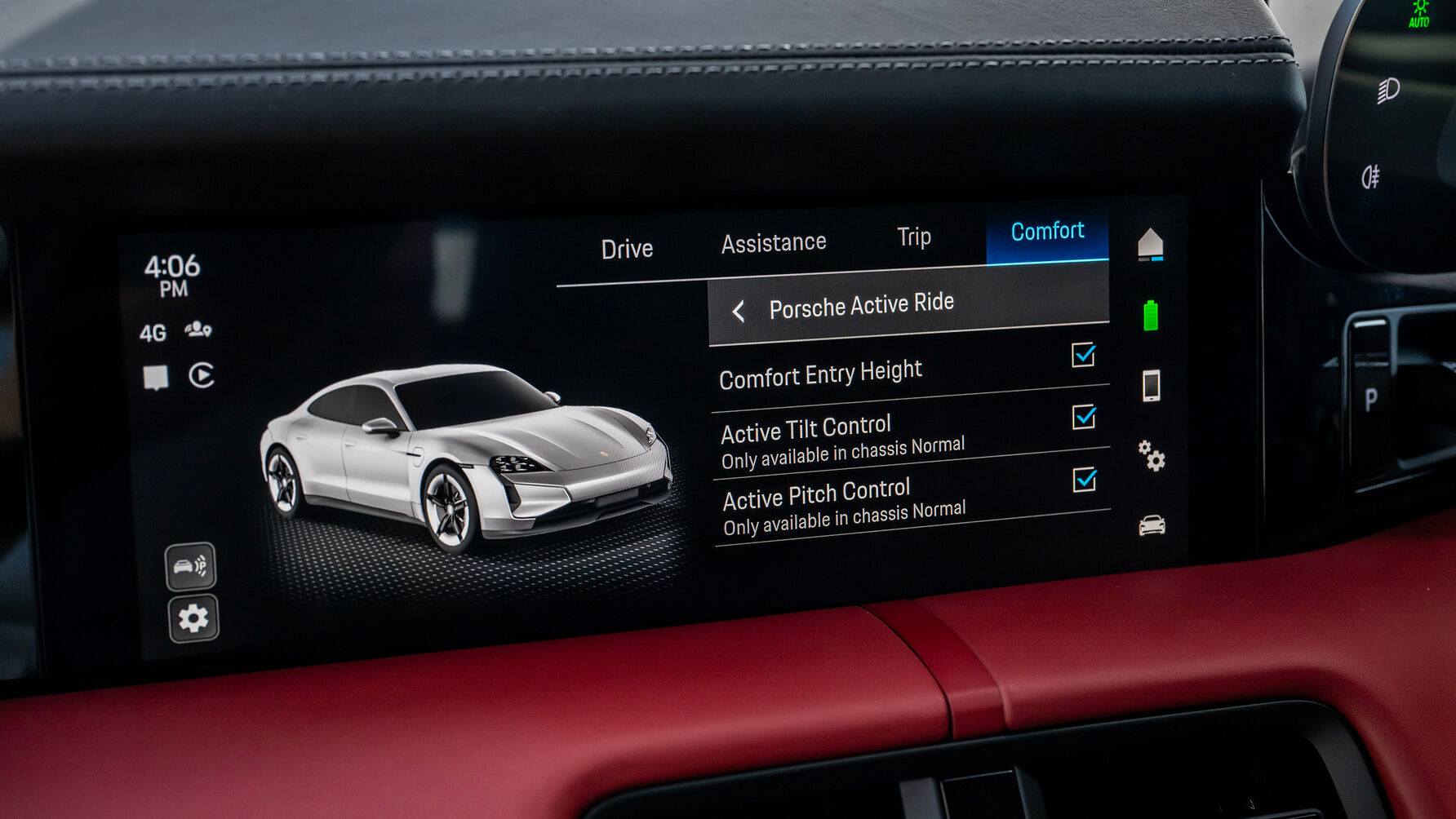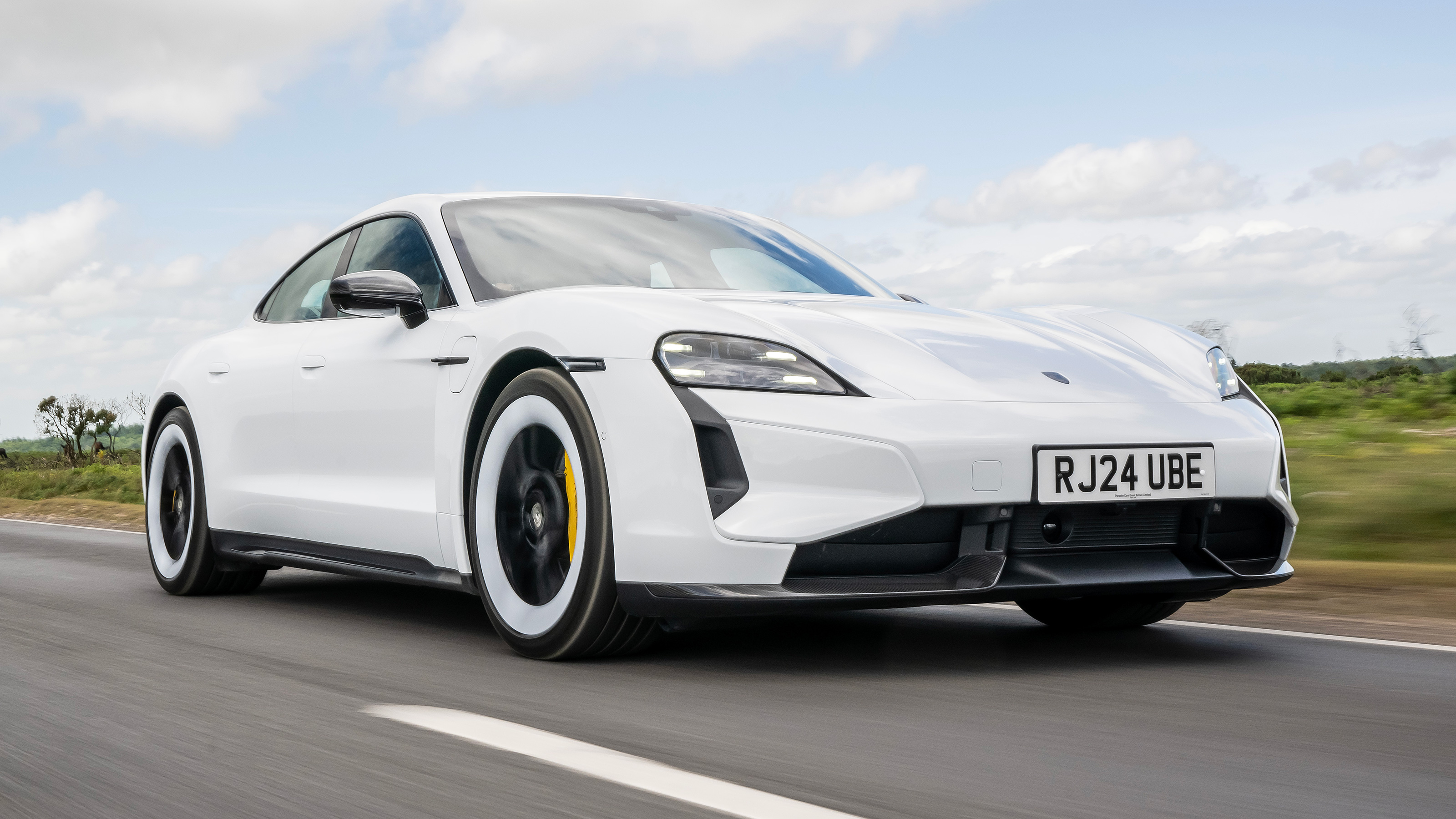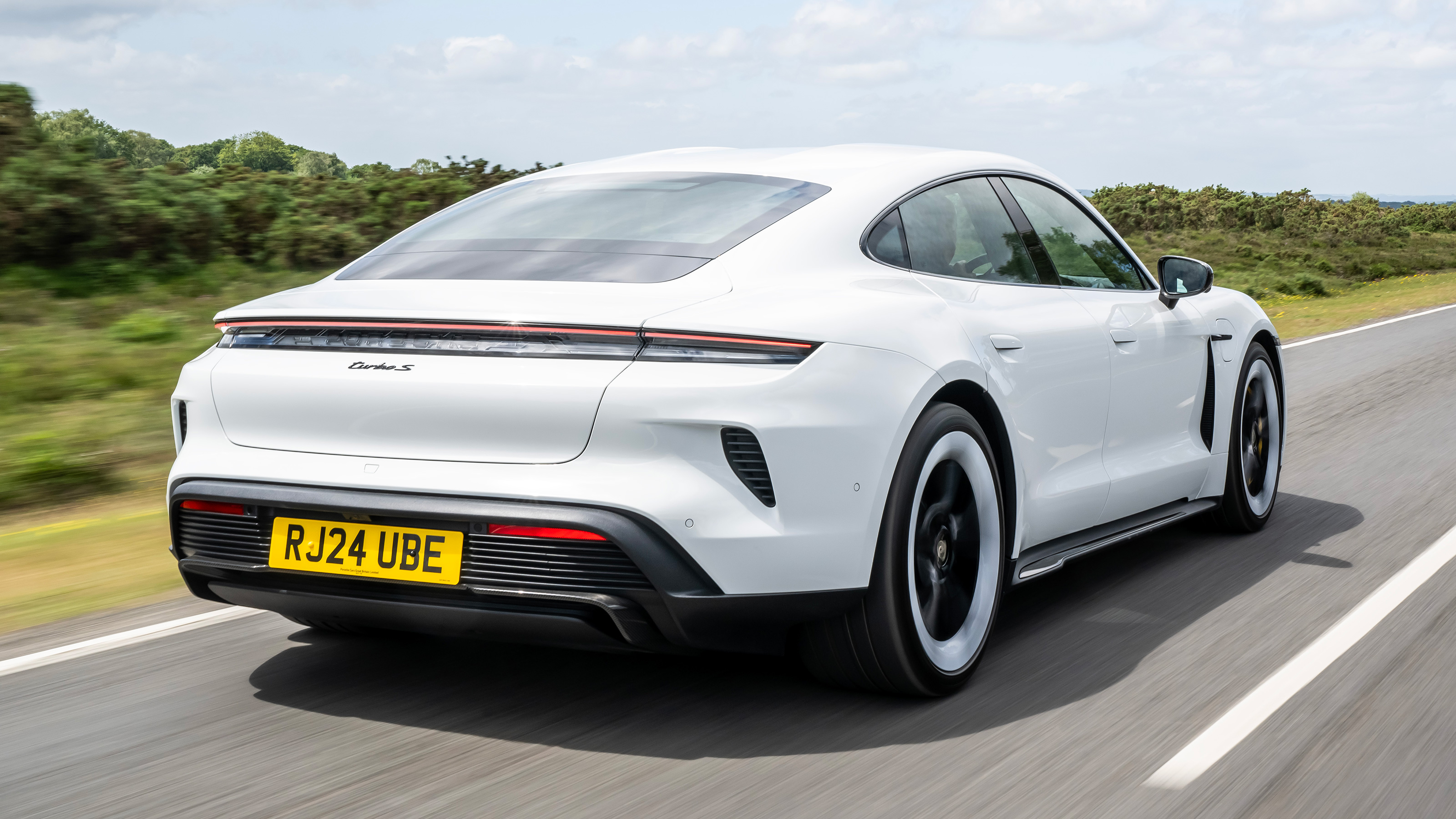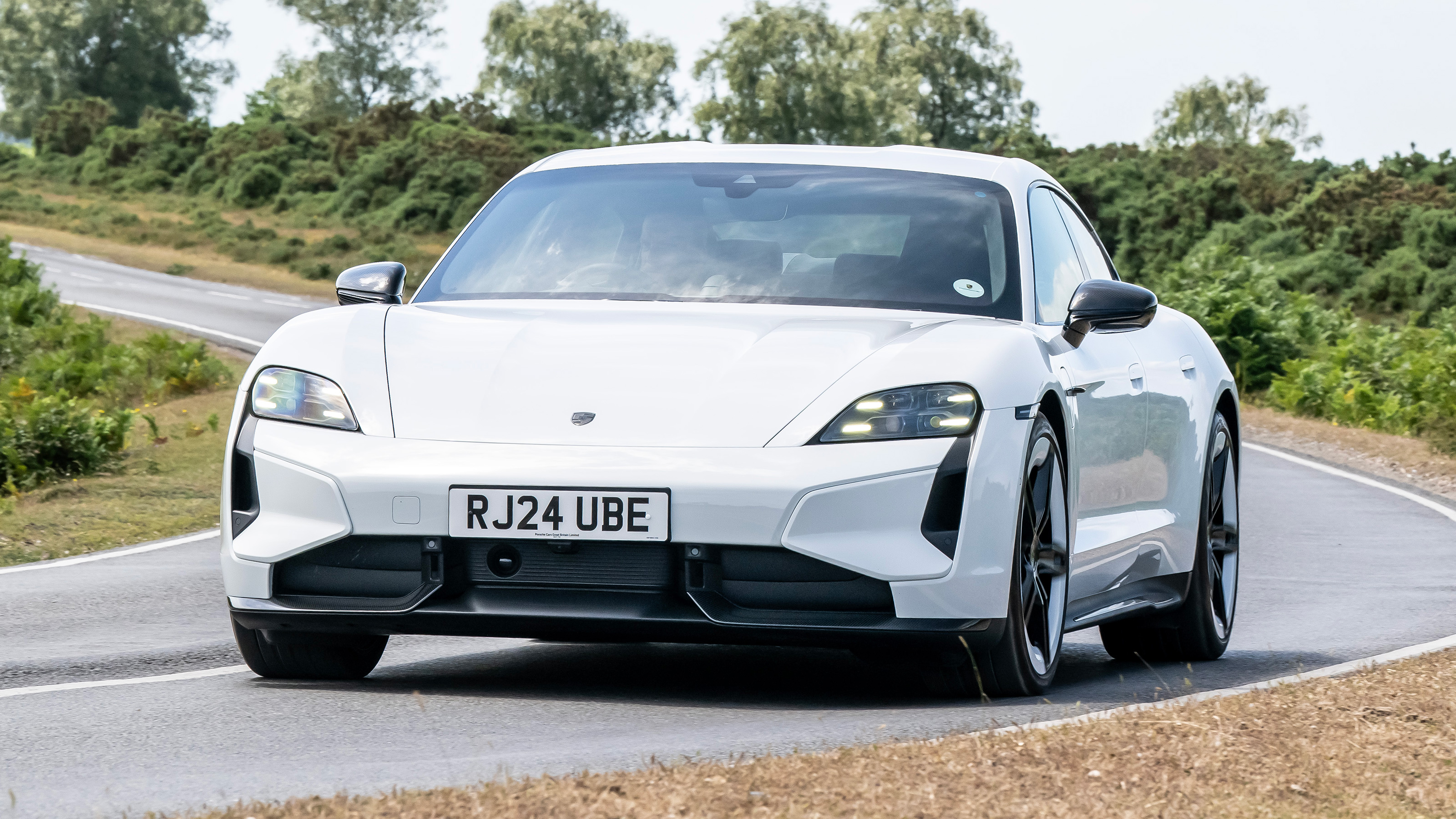
SPEC HIGHLIGHTS
- Battery
Capacity105kWh
- BHP
764.4bhp
- 0-62
2.4s
- CO2
0g/km
- Max Speed
162Mph
You’re about to say the Porsche Taycan Turbo S is pointless because it’s too fast, aren’t you?
Nope. The opposite. It isn’t fast enough.
Erm, come again?
Here’s the thing. You and I (and Porsche, probably) all know that a Taycan 4S is All The Taycan You Actually Need.
It looks the same as a Turbo S. It has 540bhp and does 0-62mph in 3.7 seconds. It has foolproof four-wheel drive. Flat out, its 155mph top speed is a mere 7mph less than the Turbo S… which costs £60,000 more.
So what’s gone wrong with the Turbo S?
The Turbo S had a purpose back when it was the ultimate Taycan. This bowel-wringingly fast four-door isn’t for the people who want ‘enough’. It’s for the people who lie awake at night fantasizing about pouncing on an unsuspecting M5 or Tesla Plaid at the lights. For the people who want the ultimate. Just because it exists.
And the Turbo S simply isn’t the ultimate any more?
Nope. When Porsche facelifted the Taycan to add range, a smoother face and pointless fake vents in its backside, it one-upped itself. We were introduced to the Taycan Turbo GT – all 1,020bhp of it. Knowing that exists, how could you make do with a mere 939bhp Turbo S?
Could you show your G-force-ridden face knowing it took a whole 2.4s to go from 0-62, not 2.3? The shame!
Sure, you’d save yourself £25,000 by choosing S over GT, but that’s not what Ultimate Alpha Sigmas do.
So, the Turbo S ceases to have a point.
Why are you testing it then?
Because the particular Turbo S that Porsche sent to TG HQ was fitted with a very tasty optional extra. Stay with me on this while I wrap your head around the £6,291 Active Ride Control.
Top Gear
Newsletter
Thank you for subscribing to our newsletter. Look out for your regular round-up of news, reviews and offers in your inbox.
Get all the latest news, reviews and exclusives, direct to your inbox.
I know all about adaptive suspension thanks.
But you’re used to Porsche’s air suspension, or its 48-volt ‘PDCC’ anti-roll bars. ARC is new. In fact it feels like it’s come from the future. I’ll stick my neck out and say this is the next leap in suspension tech. It could be one of the landmarks, like the hydropneumatic Citroen DS or McLaren’s interlinked shocks.
Explain away…
If you were to jack it up and unbolt the wheel for a good poke around, you’d find no spring wrapped around the damper. Instead each tower carries its own high-voltage electric motor, which spends its days working as a hydraulic pump.
Most of the time, the suspension is relaxed and absorbent, but with unflappable body control. But the system doesn’t just counteract body roll – it erases it entirely and actually leans the car into a corner, with the pumps using their share of the hydraulic fluid to force the damper to move the car’s body, rather than being deflected by the road (or momentum).

You really notice it when you stand on the Taycan’s ceramic brakes. Normally, squeezing such mighty stoppers in a 2.3-tonne car would cause the nose to dive toward the floor as momentum ploughs forwards. But thanks to ARC, it stays uncannily, bizarrely flat.
In fact, ARC even pitches the car’s backside into the air when you activate Launch Control, to pre-empt the natural ‘squat’ you’d expect when flooring the throttle and unleashing 818lb ft of torque.
Does it feel natural?
That’s what’s so mind-mashingly impressive: despite the chronic tech overload and the physics-cheating stuff it’s capable of, the end result is a sports saloon with phenomenal control and Bentley-bettering ride comfort. Yet you never feel like you’re caught between two settings, wishing you could select Comfort mode for the straights and immediately toggle Sport Plus in the corners. It’s a triumph.
Six years, it’s taken to develop. And it can only be deployed in electrified Porsches (like the Panamera Turbo e-Hybrid and full EVs) because the pumps are so power-hungry. But wow. It’s rare we get a game-changing moment in the car world. Usually it’s all incremental gains. But ARC feels like Porsche flexing on the rest of the world.
Doesn’t the Ferrari Purosangue also use electronic dampers like this?
It does – from Multimatic. But perhaps because they’re currently bolted only to a much taller car riding on 23-inch wheels, they haven’t produced such a quantum leap in dynamics.
Can I get this amazing tech on a less pricey Porsche?
What, like a Taycan 4S? Now there’s an idea. Another nail in the coffin of the Turbo S is that the Turbo GT gets the £6k damper package as standard.
Make no mistake: the Turbo S is a supreme piece of engineering. Terrifyingly fast. Smartly finished. Good for a real-world 300 miles range. But because it’s neither the most outrageous or most sensible Taycan, it’s left feeling a little out in the cold.
Think of it like this: the worst-selling Porsche 911 is actually the iconic 911 Turbo. Why? Because everyone who wants a 911 Turbo buys a 911 Turbo S instead.
Featured

Trending this week
- Car Review
BMW 1 Series
- Top Gear's Top 9
Nine dreadful bits of 'homeware' made by carmakers






